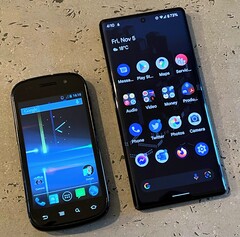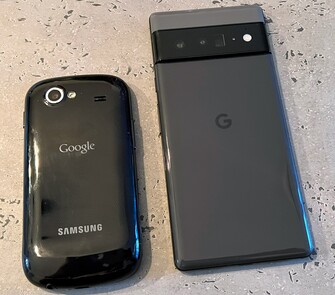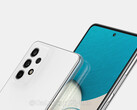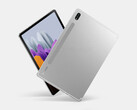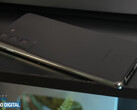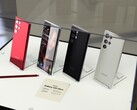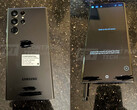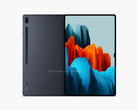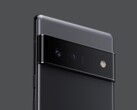When most people think of Android, either Google or Samsung are going to be at the top of their list. And for good reason. The two companies have been collaborating on Android-based devices almost from the very beginning of the Android story. It was only two years after Android was released that the two companies partnered on the development and design of the Google Nexus S and its successor, the Galaxy Nexus. Now, eleven years after the launch of the Nexus S, the two companies have joined for a close collaboration on a smartphone again, this time the Google Pixel 6 series.
Given the decade plus long gap between these deeper smartphone collaborations, we thought we’d take a look at just how much has changed and progressed since Google and Samsung initially collaborated on a smartphone. In many ways, the changes between the Nexus S and the Google Pixel 6 series encapsulate the evolution of smartphone design and functionality over the past decade. The devices are at the opposite ends of a spectrum that has seen smartphones go from a luxury to something considered essential for modern living.
The Google Nexus S was the fourth in a successful series of smartphones made by Google that were targeted at developers and Android enthusiasts and was released in 2010. It was also the first smartphone to feature NFC, a feature now commonly available on many smartphones for use primarily in making digital transactions. It was a 3G smartphone (a 4G variant, one of the first, was launched a few months later) and featured a slightly concave, and relatively large, 4-inch 800 x 480 5:3 AMOLED display with 233 ppi. Naturally, Samsung did the engineering and production of the device, but it was sold under the Google banner.
It featured a Samsung Hummingbird S5PC110 SoC (later renamed Exynos 3110) with a single-core 1 GHz Arm Cortex-A8 processor mated to 512 MB of RAM and fabricated on a 45 nm process. As chance would have it, Samsung partnered with Intrinisity on its development for its expertise in designing high-efficiency and high-performance architecture. However, before Samsung knew what hit it, Apple swooped in and acquired Intrinsity to help complete the setup of the chip team that ended up creating the M1 Pro and M1 Max chips. Separately, its GPU was a 200 MHz PowerVR SGX 540 designed by Imagination Technologies (which also has an Apple connection with the company a current Imagination Technologies licensee).
Other key features of the Nexus S included 16 GB of storage with 1 GB assigned to its Android 2.3 Gingerbread OS. It’s battery was just 1,500 mAh, but of course it was actually user replaceable back then. Regardless, it still managed to deliver up to 6.7 hours of talk time and 18 days of standby time (a measure we don’t tend to use these days). Its single camera was a 5 MP type with autofocus and an LED flash. It could shoot video in w480p @ 30fps.
The Google Pixel 6 series, which has just been launched to much fanfare is a much more different proposition. In the intervening years, Google went on to buy Motorola 2012 for US$12.5 billion before offloading it to Lenovo for just $2.91 billion just two years later. Then four years later, in 2018, it acquired the HTC mobile design team for US$1 billion. It is this team that designed and developed the Google Pixel series, including the new 6. However, Google tapped its old Nexus S collaborator Samsung to help it design and develop the semi-custom Tensor SoC that lies at its heart.
Although the Tensor SoC has Samsung Exynos labelling, it is very much a Google chip in that it will only appear in the Pixel 6 series. However, at the silicon level, it is a mix of Samsung Exynos architecture in terms of Samsung’s technical implementation of the Tensor’s 2x Arm Cortex-X1 cores, 2x Arm Cortex-A76 cores and 4x Arm Cortex-A55 cores and Google’s silicon IP. Google’s silicon level contributions include neural cores and ISP cores among others. It is also fabricated on Samsung’s latest 5 nm process - a far cry from the 45 nm process used on the Nexus S chip.
In fact, you can bet the performance of each Arm Cortex-A55 efficiency core in the Tensor will be substantially more performant than the single-core Arm Cortex-A8 found in the Nexus S. Further, instead of just 512 MB of RAM in the Nexus S, the Pixel 6 comes with 8 GB of RAM and Pixel 6 Pro comes with 12 GB of RAM. Where the Nexus S offered just 16 GB of storage, the Pixel 6 series offers up to 512 GB of storage. The Nexus S offered just 1,500 mAH of battery to the 4,614 mAh in the Pixel 6 and the 5003 mAh in the Pixel 6 Pro. Tests show talk time of the Pixel 6 series delivering over 26 hours of talk time and over 15 hours of video play. Things certainly have come a long way.
The dramatic contrasts continue on the display side. You will recall the Nexus S offers a 4-inch 800 x 480 5:3 AMOLED display with 233 ppi. The Pixel 6 offers a 6.4-inch 1080 x 2400 20:9 OLED panel with 411 ppi and 90 Hz refresh rate while the Pixel 6 Pro centers on a 6.7-inch 1440 x 3120 19.5:9 OLED panel with 512 ppi and 120 Hz refresh rate. Same on the camera side. The 5 MP Nexus S camera is leagues behind what Google has since been able to achieve with its ML-based computational photography. The Pixel 6 and Pro also pack a 50 MP wide camera and 12 MP ultra-wide camera with the Pro also adding a 48 MP telephoto camera with 4x zoom lens.
Ten or eleven years isn’t a long time in some ways, but in the tech world it seems like a lifetime ago. It is interesting to see how our preferences have changed from a smartphone that one could easily hold in one hand that was still just starting to come to grips with the Internet. As connectivity and capability improved, smartphones have increased in size as they took over many of the functions that were still largely left to computers at the time the Nexus S launched.
The common thread between the Google Nexus S and the Google Pixel 6 series, however, is their shared partnership between Samsung and Google. The two are likely to partner on the Tensor 2 (the rumored GS201) as well, so we can expect to see a continuation of this recently rekindled and deeper smartphone partnership in the immediate future. Naturally, will be keeping a close eye on the way smartphone design and functionality continues to evolve over the rest of this decade -- will they roll, fold, keep the same form factor or will be using other smart wearables instead?
Source(s)
Own.




